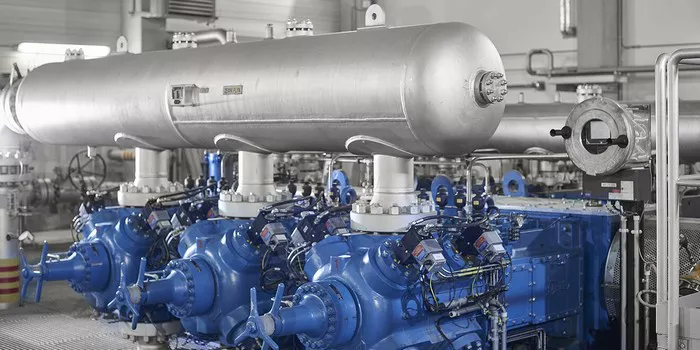The global reciprocating compressor market is experiencing robust growth, driven by rapid industrialization and increasing demand across key sectors. According to a report by Allied Market Research, the market, valued at USD 4.9 billion in 2022, is expected to reach USD 7.2 billion by 2032, growing at a compound annual growth rate (CAGR) of 4.2% from 2023 to 2032.
Reciprocating compressors, also known as piston compressors, are positive displacement devices that compress gases through the reciprocating motion of pistons within a cylinder. The process begins when the suction valve creates a vacuum to draw in air, and as the pistons move back and forth, they initiate compression. Once the pressure in the cylinder exceeds that in the discharge pipe, the air is expelled into a storage tank through the discharge valve.
These compressors are used in a wide range of industries, including oil and gas, mining, and manufacturing, for tasks such as drilling, compressed air filling, and painting. The rising demand for crude oil and renewable energy resources, coupled with increasing machinery use in the manufacturing sector, is expected to drive further growth in the reciprocating compressor market. In 2021, global oil consumption reached 95 million barrels per day, highlighting the need for advanced machinery and technology to meet global energy demands—further fueling the demand for compressors capable of operating in harsh environments.
In 2022, the Asia-Pacific region led the global market in terms of revenue, with North America projected to experience the highest CAGR due to increasing industrialization and population growth. The growing demand for consumer products in these regions, particularly in sectors like automotive manufacturing, is further boosting the need for reciprocating compressors.
Leading manufacturers in the reciprocating compressor market, including Ariel Corporation, Atlas Copco AB, Burckhardt Compression Holding AG, and Gardner Denver Holdings, Inc., offer a broad range of compressors for various industries, such as oil and gas, pharmaceuticals, chemicals, and refrigeration. Notably, in June 2022, Ariel Corporation, the largest producer of separable reciprocating gas compressors, partnered with Hoerbiger, a leader in compressor technology, to develop non-lubricated compressors tailored for hydrogen compression needs in future mobility markets, including public transportation and high-pressure vehicle fueling stations.
The growth of the reciprocating compressor market has been driven by the expansion of the manufacturing, oil and gas, and automotive sectors. Asia-Pacific continues to dominate the market share, thanks to ongoing automation and innovation across industries. Meanwhile, the LAMEA (Latin America, Middle East, and Africa) region is poised to be the fastest-growing market, propelled by industrialization and urbanization in developing countries.
Related topics:
- VW Spinoff Scout Reveals Its EV Vision, Including a Model with a Gas-Powered Generator
- GM Postpones EV Motor Production at St. Catharines Plant Until 2027
- Classic Fiat 500 Transformed into Electric Vehicle for Enhanced Performance

